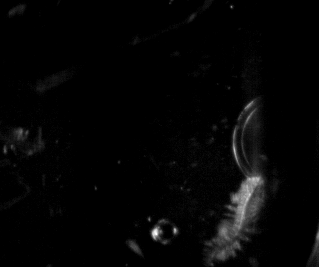Research projects
Studying communication where it began
We want to discover the fundamental ways in which our brains work by looking at those that still live in our ancestral habitat - the ocean. But marine life is abundant, so where do we start?
Our (first) model organism of choice is a little worm called Tomopteris, who lives in oceans all across the globe. Currently, we're focusing on Tomopteris helgolandica, a species that is transparent, which means we can access their nervous system without causing them harm. They are also unique for their ability to generate yellow bioluminescence, a colour that is exceedingly rare in the ocean. What do they use this special communication signal for? And which neural mechanisms are involved in its generation and interpretation? By answering these questions we aim to uncover what happens in the brain when we communicate, a critical skill found across the animal kingdom.

What does Tomopteris helgolandica say with their bioluminescence?
Do they use it to attract mates? As a distress signal to warn others of danger? Perhaps both? We will find out by performing behavioural experiments to observe when and how they "talk".

How does the brain process visual communication signals?
Which structures and neural mechanisms are involved in the processing of another organism's communication signals? By looking at the activity of neurons in the Tomopteris brain when they see bioluminescent signals we will figure out where and how they are processed.

How does the brain generate visual communication signals?
What happens in the brain when Tomopteris decides to communicate? We will find out by observing how the nervous system behaves before and during the generation of a communication signal.
Video: two worms filmed in the dark using infrared light.
.jpg)
When does Tomopteris helgolandica start to communicate?
Are they born with this ability, or is it something that develops over time as they grow up? By rearing them in the lab and observing them across development we will discover when they start communicating.